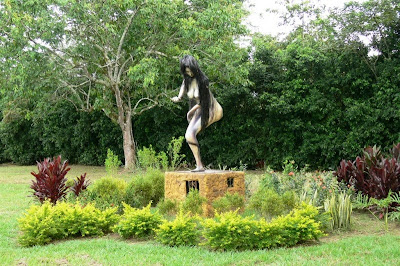Myths for Monday -- Caballo Cojo & the Vaquero del Otro Mundo

In the Department of Bolívar (as well as other Atlantic Coast Departments), there are two myths related to horses and riders. This makes sense because Bolívar's main industry is livestock. Both myths tell of scary emissaries of the devil. #1 The Caballo Cojo (Limping Horse) In villages in the Center and South of the Department of Bolívar, stories are told that on dark nights a horse can be heard whinnying and galloping across the countryside. The sound of the hoof beats are said to be terrifying and without equal. People who have heard the sound, have also often seen an amazing sight -- a black horse with penetrating, glowing, red eyes --whose presence leaves them frozen and dumb. It is in this frozen and mute state that they will then see the horse, which has only 3 legs, run past. Behind the apparition, will remain a nauseating smell of sulphur. #2 The Vaquero del Otro Mundo (Cowboy from another Word) In several of the towns and villages of the department of Bolívar, peopl

